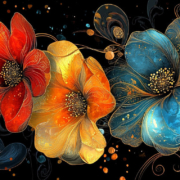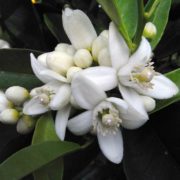Labdanum Perfume – Smell, Properties and Curiosities

Labdanum is derived from a resinous secretion of a Mediterranean rockrose shrub, Labdanum perfume possesses unique properties that have made it a cherished ingredient for centuries.
Table of Contents
-
The Allure of Labdanum Perfume
-
The Origins and Extraction Process
-
Properties of Labdanum Perfume
-
Curiosities and Legends Surrounding Labdanum
-
Modern Uses and Combinations
-
Labdanum and Cistus are the same plant?
-
Conclusion
The Allure of Labdanum Perfume
Labdanum perfume boasts a rich and complex scent profile, captivating the senses with its warm, balsamic, and resinous notes. Sweet, musky, and slightly woody, the fragrance of Labdanum has an enigmatic quality that attracts people. When experienced, Labdanum perfume transports us to the ancient landscapes of the Mediterranean, evoking images of sun-drenched rocky terrains and fragrant shrubs that have been the source of this mesmerizing essence for centuries.
The Origins and Extraction Process
Labdanum, known also as “Ladanum” has its roots in ancient civilizations. The resinous substance is obtained from the sticky brown-gray gum that coats the leaves and stems of the Cistus ladanifer and Cistus creticus shrubs. These shrubs grow in the Mediterranean region, including Spain, Portugal, and parts of North Africa.
The extraction of Labdanum resin is an ancient and labor-intensive process. Historically, shepherds would collect the resin from the beards of goats that grazed on the Cistus shrubs. The sticky gum would adhere to the animals’ coats and was then painstakingly collected by combing through their fleece. Today, solvent extraction is the preferred method, where the resin is dissolved in a solvent to obtain a concentrated aromatic absolute.
Properties of Labdanum Perfume
Labdanum, with its diverse chemical composition, offers perfumers a wide array of olfactory possibilities. Labdanum essential oil components include cinnamic acid, resin acids, and a vast variety of aromatic compounds such as monoterpenes, diterpenes, and sesquiterpenes. These constituents work together to create the signature scent of Labdanum.
The sweetness in Labdanum perfume comes from the presence of vanillin and coumarin compounds, while the woody and resinous facets arise from various terpenes. The complexity of Labdanum perfume makes it a versatile ingredient in perfumery, blending well with other essential oils and enhancing their characteristics.
Curiosities and Legends about Labdanum
Labdanum, with its rich history and intriguing fragrance, has inspired various curiosities and legends throughout the ages. From ancient rituals to mystical properties, Labdanum has been steeped in myth and fascination. Let’s explore some of the captivating stories and beliefs surrounding this mystical resin:
a. Mystical Beliefs and Sacred Uses:
In ancient civilizations, Labdanum was considered a gift from the gods. Its sticky, resinous appearance and exciting scent brought people to believe that it possessed mystical properties. The resin was frequently used in sacred rituals and offerings to the deities, creating a connection between the spiritual and material worlds.
Labdanum was also a vital component of incense blends used in religious ceremonies. Burning Labdanum incense was believed to purify the air and elevate prayers to the heavens. The fragrant smoke that emanated from the resin-filled braziers added an aura of reverence and spirituality to religious gatherings.
b. Medicinal and Cosmetic Applications:
Labdanum’s alluring scent wasn’t its only attribute appreciated by ancient societies. The resin was utilized for its medicinal and cosmetic properties as well. Herbalists and healers valued Labdanum as an aromatic remedy for various ailments, especially those related to respiratory issues. The inhalation of Labdanum’s fragrance was used to alleviate symptoms such as coughs and congestion.
Moreover, Labdanum found its way into the realm of cosmetics and personal care. Due to its sticky and resinous nature, Labdanum was used as a fixative in perfumes and cosmetics, helping scents and ointments to last for longer periods. This quality made it an essential ingredient in ancient perfumes, enhancing their longevity and scent profiles.
c. Connections to Ancient Trade Routes:
Labdanum’s popularity and desirability led to its inclusion in the flourishing ancient trade routes. The resin became an important commodity in commerce between different civilizations, in this case between the Mediterranean and the Middle East. Its journey from the rocky terrains of the Mediterranean to distant lands introduced Labdanum to a diverse array of cultures, each interpreting its significance in unique ways.
d. Inspiration for Mythological Tales:
Like many natural substances, Labdanum has been associated with mythological tales and stories. In Greek mythology, a legend says that when the god Apollo pursued Daphne, she transformed into a laurel tree to escape his advances. Apollo wore for her a laurel wreath. Over time, the laurel branches exuded a resin that resembled the sticky substance we now know as Labdanum.
e. The Enigma of Animal Attraction:
Labdanum’s appeal isn’t limited to humans; it also captivates certain animals. In the traditional harvesting method, Labdanum resin was collected from the beards of goats that grazed on Cistus shrubs. The goats’ coats became coated with the sticky resin, and upon combing their fleece, the precious Labdanum was obtained. The reason for the attraction of the goats towards it remains a mystery, but some believe that the scent of Labdanum may mimic pheromones or attract the goats as a form of natural symbiosis.
Labdanum’s rich history, mystical appeal, and fascinating legends have made it important in the world of perfumery and beyond. From sacred rituals to ancient trade routes, this resin has left an indelible mark on human culture and spirituality. Today, as we continue to appreciate the captivating fragrance of labdanum in modern perfumery, we can also celebrate the stories and beliefs that have accompanied this exquisite scent through the ages. The enigmatic nature of labdanum, both in its properties and its stories, means that it remains a perennial curiosity in the world of perfumery.
Modern Uses and Combinations
Labdanum continues to occupy a special place in modern perfumery, especially in oriental and chypre fragrances. Its warm, amber, and slightly animalic characteristics create a sensual and enticing aura.
Labdanum often acts as a base note in many perfume compositions, giving depth and longevity to the overall fragrance. When combined with other essential oils, labdanum creates captivating aromatic compositions. For example, when combined with floral notes such as Rose or Jasmine, labdanum adds a seductive dimension to a floral bouquet.
On the other hand, when blended with citrus oils, labdanum is used to produce a brighter and more refreshing fragrance with a touch of finesse.
Labdanum and Cistus are the same plant?
Labdanum, also known as “Ladanum,” refers to a sticky resin derived from the leaves and stems of various species of the genus Cistus. The genus Cistus is a family of flowering shrubs belonging to the family Cistaceae.
The two most known species associated with Labdanum are Cistus ladanifer (commonly known as common gum cistus or rockrose) and Cistus creticus (also known as pink rockrose or Cretan rockrose). Both of these species produce the resinous gum that is used to extract Labdanum essential oil.
In summary, “Labdanum” refers to the resinous gum obtained from certain species within the “Cistus” genus. So while they are related in that Labdanum is derived from Cistus plants, they are not the same plant.
Hence, cistus essential oil should not be confused with Labdanum absolute. Cistus essential oil is usually used in aromatherapy and Labdanum in perfumery.
Conclusion
Labdanum perfume, with its captivating scent, rich history, and unique properties, continues to captivate perfumers and fragrance enthusiasts worldwide. Its warm and resinous notes evoke a sense of nostalgia and connection to ancient times.





















Leave a Reply
Want to join the discussion?Feel free to contribute!